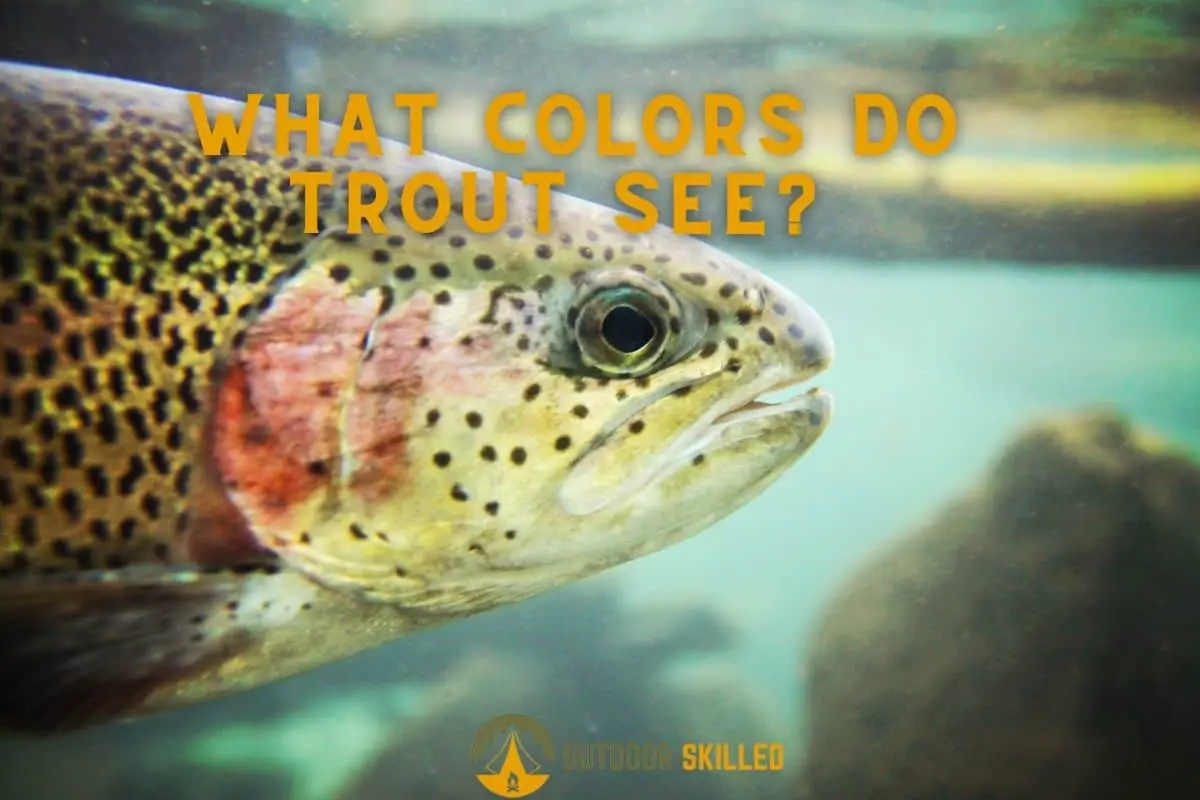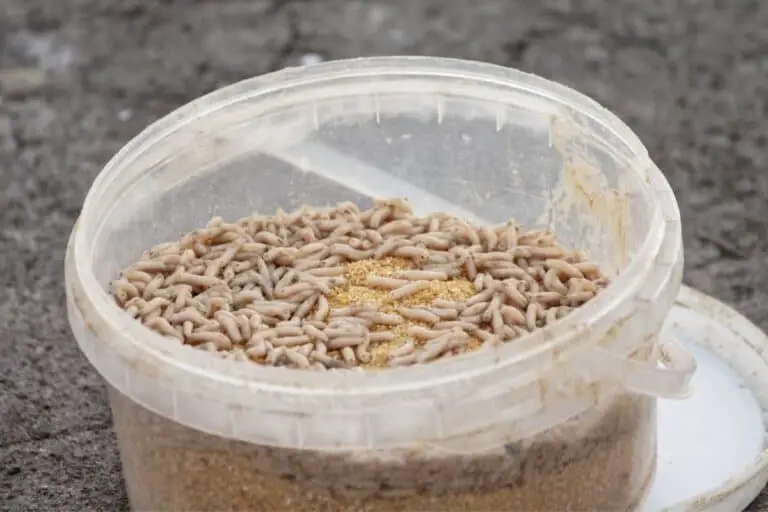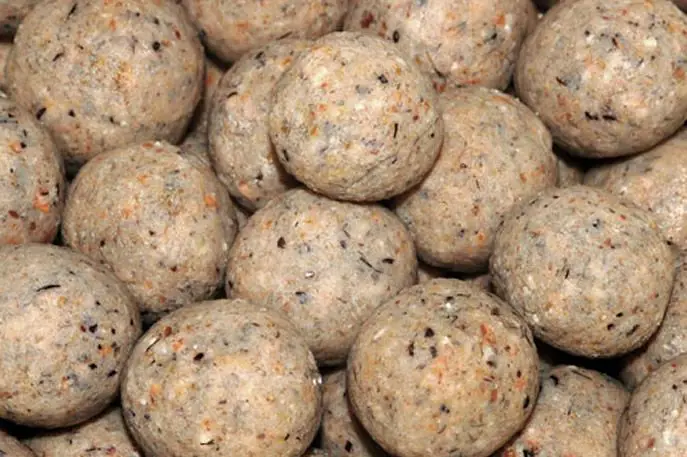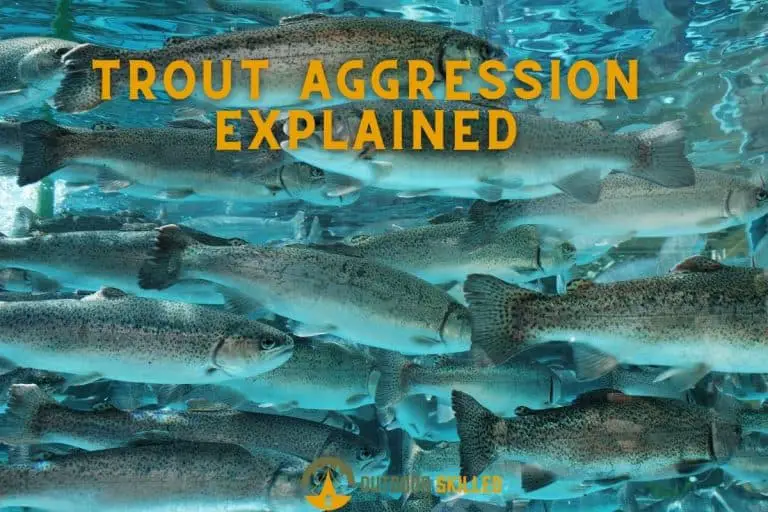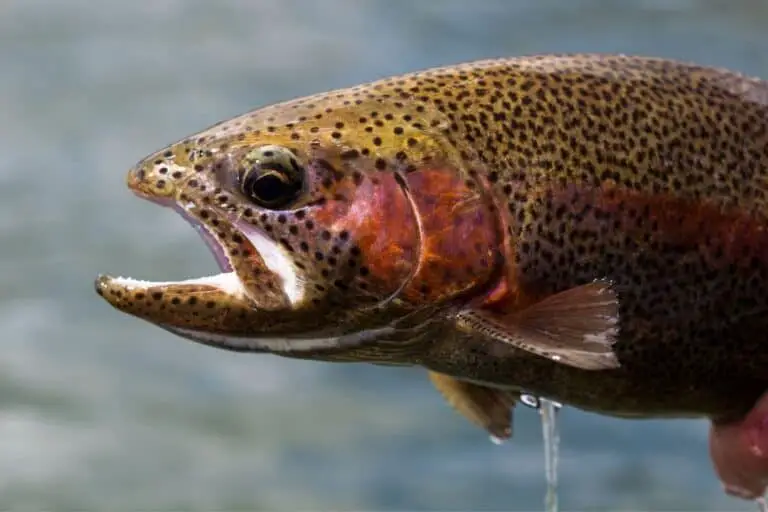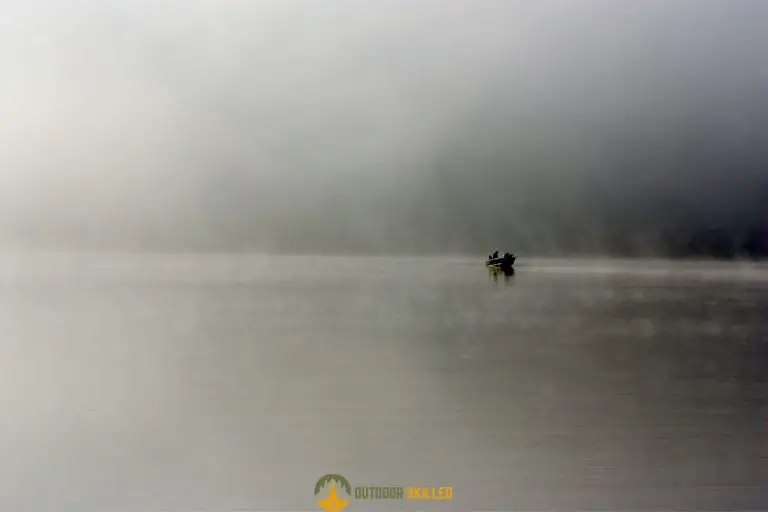What Colors Do Trout See Best? Facts You Can Exploit Today
Can fish see in color? A debate has been going on for a long time about whether choosing specific colors is really that effective in trout fishing.
So, what colors do trout see best? Trout see colors like red, orange, and yellow best in clear waters. In darker waters, yellow and green are better choices. At night, you should go for black and use contrast in your lure to be visible for trout that can’t discern colors at night
Keep reading to know more about how trout see colors and the best trout lure colors to improve your fishing experience.
Table of Contents
What Colors Do Trout See Best?

Trout can see all colors but in a different way from what we do.
Given that the water is a poor light conductor, it distorts the nature of the color depending on how much light it absorbs depending on its wavelength or color.
Long-wavelength light, colors like red and orange, get quickly absorbed and fade to black, while short wavelengths like blue and purple are absorbed more slowly.
Red appears brighter to trout than it does to humans at a closer look, but it turns black at a greater distance.
Going for red, orange, and yellow are the best choices in clear water as these colors are visible and catchy. In darker waters, yellow and green are better choices because they stand out well in brownish muddy water.
The trout cone cells allow it to perceive color only in clear, shallow water. The full detail of color is seen only at a close range.
The ability to detect color becomes completely eliminated within 12 feet (3.6 meters). Shades of blue, then red, and then green shades are more distinguishable to trout from further distances.
What Color Are Trout Attracted to?
Trout are attracted to any color that matches their forage, such as white, gold, brown, green, black, silver, pink, orange, yellow, and red. In muddy, unclear water, go for yellow and green. In clear waters, go for red, orange, and yellow.
When you want to decide what lure pattern or color to use for trout, it’s important to remember the old saying “match the hatch”. Using colors and patterns that imitate trout’s forage is undeniable in getting successful strikes from trout any day, any time.
What Are The Best Colors For Trout Fishing?
There are lots of options you can choose from when picking the best lure color for trout, so I made you a list with the best color lures and when it’s best to use them.
Trout Fishing Lure Color Selection Chart
| Color | Best Way to Use for Trout Fishing |
|---|---|
| Black | – In muddy water – In Deepwater – Night fishing |
| Orange Red Yellow | – Clearwater – Shallow water – Sunny days |
| Yellow | – Muddy water – Cloudy days |
| Brown | Combined with another natural color to be used anytime |
| White | – Cloudy days – Night fishing |
| Green | Muddy water |
| Chartreuse Pink | Deepwater |
| Blue Purple | – Muddy water – Deepwater – Cloudy days |
You can get creative and make combinations of two or more colors to imitate a specific pattern. Combinations like Chartreuse and white or red and white can produce contrast that works in any light.
If you’re not sure about what type of lure to use, check out my guide for the best lures for Trout.
Does Color Matter When Trout Fishing?

Colors matter in trout fishing, or any other fishing, because you need to know what appeals to your target to be able to catch its eyes.
If you use the wrong color, you may miss your chances of getting a strike the whole day, even if you jig your arm off.
Picking the color for trout also depends on various factors you should consider to get satisfying results.
Water Clarity
Water is a poor light conductor that can absorb much of the lure light (color), which causes the intensity to decrease and the color to change. When the water is not clear, the light becomes more absorbed and scattered when it enters decreasing the color intensity more and more.
Red and orange are the best colors for trout lures and flies in clear water. Combinations like Chartreuse and white or red and white produce the most contrast and stand out, especially in the shallows.
In muddy water, it’s better to use dark-colored lures because they contrast well with brownish water and can be easier for trout to see. Lures in black and green really stand out in brown water. Other colors may not be visible in muddy waters.
The best bait choice for muddy water is dark-colored nymphs. For example, the dark peacock body of the prince nymph contrasts well with the brown water and allows it to stand out more while its soft wings allow it to imitate the movement of many different insects, making it the ideal choice for catching trout.
Fluorescent colors like green, chartreuse, and pink can also provide greater visibility under the water as well as reflects some of the ultraviolet radiation that strikes it as visible light. And since UV radiation can travel a greater distance underwater, fluorescent colors can be very effective in fishing for trout.
Depth
Colors like red and orange work best when you’re fishing in shallow water. If you’re fishing on a sunny day, you can try using flashy and reflective lures that can shine in the water to catch the trout’s attention.
If you’re fishing deep in the water, it’s best to go for darker colors like black, blue, and purple. The darker colors help the lures stand out as they provide contrast, making it easier for trout to detect your lure. Using white can be a great bet as well; it contrasts nicely with the darkness of deep water.
You can also check out my other article about whether fishing kayak color matters to learn more about how colors affect your fishing experience.
Can Trout See in The Dark?

Short answer: Yes, trout do see at night, and you can catch some spectacular catches at night, check out my complete trout night fishing guide here.
Trout’s eyes have photoreceptors in the retina: cones and rods. Cones respond differently to light of different wavelengths, and are responsible for color vision, while rods optimize vision in dim conditions to allow them to perceive the world in darker circumstances.
While trout can see in the dark, their ability to see color at night is eliminated as they switch from using cone cells to rod cells to be able to see in the dark, then black becomes the most visible color, making the best lure choice the ones that use contrasts, not color.
Unlike humans, trout use only one type of receptor at a time. They either use the cones or the rods, and the overlap at dawn and dusk can be an exception as they become able to use both.
The cones are used during the day, allowing sharp, full-color vision, while rods work the night shift turning the vision into black and white with better perception in the dark.
Can Trout See You?
Trout can see humans. When objects on the surface or beyond first appear in the window of vision or come in view on the edge of the circular window of vision, they appear much shorter and wider than they actually are.
This could be one of the reasons why trout get easily spooked if they detect you from above.
The more you get closer to the center of their window of vision, the less distorted you’ll look to a trout. You gain your natural form in their eyes when you get closer. Objects directly overhead appear exactly as they should.
Another interesting thing about trout vision is that objects on the surface are a backlight from the fish’s perspective, appearing mostly as a silhouette as if you’re looking at someone standing with their back to a window on a sunny day. This happens because the refractive index of its cornea is almost exactly that of water, allowing trout to see more clearly through water than air.
I have made another complete post just about whether trout can see you; you can check it out for more info on the topic (yes, there is a bit more to it).
Related Questions
What color are trout spots?
Trout spots are usually shades of black, brown, or red. The color of the spots can vary depending on the trout species and the specific individual fish.
Some trout may have spots that are more prominently black, while others may have spots that are more brown or red in color. The intensity of the color can also vary, with some spots being very dark and others being more muted or pale.
In general, trout spots are usually darker than the rest of the fish’s body, typically green, silver, or blue.
Do Trout Like Pink?
Trout do like pink. You can catch trout with pink lures, but it’s preferred to save it for bright days in clear water. Pink looks special in a certain light, so it’s better to use it in shallow waters on sunny days when the light entering the water is enough to make it visible.
Are Trout Attracted to Light?
Trout are attracted to light. Sometimes it’s all you can use to get their attention as their ability to see bright colors decrease at great distances or when the water is not clear enough. So, flashy lures are the most successful in getting trout to strike.
If you are thinking of fishing with lights, beware that the laws and rules on it differ from one place to another, so first check out our guide to where is fishing with lights illegal here.
Can You Catch Trout at night?
You can catch Trout at night. They can be found in shallow water feeding. To catch their attention, you can use lures with color contrast, like black and white, or you can use a spinner or bladed lures that produce vibrations in the water, so they feel it instead of seeing it.
Are Trout Colorblind?
Trout are not colorblind. They can see color in its full details, but their ability to see color is limited to relatively clear, shallow water and short distances. At night when the water is dark, trout lose the ability to see color because they switch to their rod cells.
Level Up your Trout Fishing
- Gear up with the best Trout Fishing Rods here
- Check out the best Trout Fishing Reels here
- Find the best fishing lines for Trout here
- Get larger trouts faster with these trout baits that NEVER fail
- Learn about hook sizing for trout here, and the best baits for rainbow trout here.
- You can’t go wrong with these powerbaits for trout.
- Get larger steelheads with these baits
- These Steelhead Lures are the experts’ picks for the year, and it’s easy to see why
Helpful Resources
If you like this article, please share it or pin it, you can find the share buttons below. We will really appreciate it ❤️

